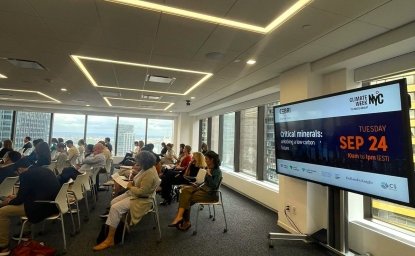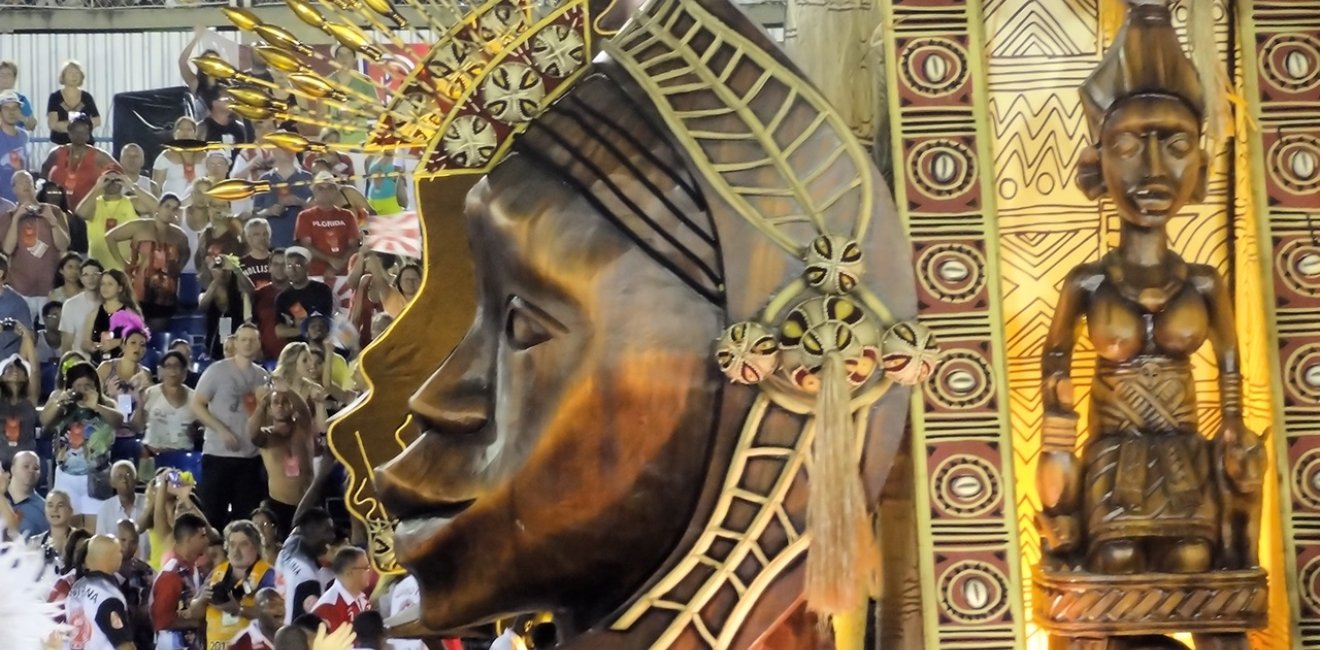
A blog of the Brazil Institute
February is Black History Month in the United States: a time to celebrate and contemplate the sacrifices and triumphs of members of the African American community in the struggle for civil rights. But the United States is not alone in celebrating its African heritage this month. On February 9, Brazilians began the annual celebration known as Carnaval. Although it has become a grand display of national pride, Carnaval springs from many of the cultural contributions of Brazil’s African descended citizenry, with roots reaching from the slave plantations of Bahia and Candomblé temples of Rio de Janeiro all the way to the shores of West Africa.
The Brazilian reality is one of paradox: a nation that views itself as a post-racial democracy while remaining riddled with racial oppression; an economy that creates immense wealth for the few while condemning many to extreme poverty; and a country celebrated for its environmental bounty while investing in its destruction. However, Brazil appears to thrive despite (or perhaps, because of) these conflicts, nourished by the contradictions that might have starved a different nation. Carnaval itself reflects the paradoxes of Brazil for Carnaval is both a celebration and a denial of Brazil’s Black roots.
Carnaval today differs significantly from its earliest celebration in Brazil, reflecting the historical legacy and modern realities of the diverse Brazilian nation. Carnaval can be traced back to Portuguese colonists in Brazil in the 1830s, who brought from Europe the tradition of holding indulgent celebrations before the beginning of Lent.[1] But Carnaval, just like the nation itself, was not solely European in origin: Brazil was home to more than 2,000 Indigenous tribes and became the home of four million African slaves kidnapped from the African continent.[2] Traits seen as quintessentially Brazilian and central to Carnaval—such as the music and dance of samba—originated in the slave communities of Northeast Brazil, developed by people whose very humanity was denied for most of Brazil’s history.
Not only are the practices of Carnaval entangled in this apparent contradiction, but the very space Carnaval occupies within Brazilian culture is enmeshed as well. It is a space of authenticity, but also one of fantasy and aspiration. The centrality of the Afro-Brazilian contributions is obvious: samba, an art form originating with African slaves, has become almost synonymous with Brazil’s Carnaval.[3] This evolution is an authentic reflection of Brazil. More than 50 percent of Brazil’s people self-identify as pardo (brown) or preto (black), and thus, samba is put on display and consumed by a nation consisting of primarily non-white bodies. Yet, Carnaval presents a sanitized version of the Afro-Brazilian experience for national consumption, elevating the cultural contributions of Black Brazilians while eliding the violence that has been done to the Black body in Brazil. The authentic experiences of Black Brazilians become fantasy and aspiration.
Carnaval is also a time of license, a moment of liberation for a society imprisoned by rigidly divisive racial and social hierarchies.[4] The costumes that adorn attendees are chosen specifically to portray oneself as someone else and within this ecstatic communal space, shedding oneself is seen as acceptable, even encouraged.[5] Hierarchical differentiations, social and otherwise, melt away as for a few short days as Brazilians of all colors and backgrounds dance side by side in the streets. Carnaval becomes a space where “what if” exists in concert with “what is.” During Carnaval, especially for Brazil’s most marginalized citizens, another realm is momentarily accessible: a place pulsing with the possibilities of how life could be.
Carnaval occupies a space both in and out of touch with reality. Like Brazil, Carnaval is a place of mestiçagem or mixture, incorporating authentic aspects of Brazilian culture and life that reflect the nation’s Portuguese, African and Indigenous heritage.[6] Simultaneously, Carnaval is fantastical, reflecting a space where reality is inverted, where Black Brazilian contributions are revered, and where social and economic hierarchies fall into the background.
The allure of Carnaval lies in this merger, in this nexus of contradiction. Roberto DaMatta, one of Brazil’s most famous sociologists, wrote in Carnivals, Rogues, and Heroes: An Interpretation of the Brazilian Dilemma: “Ritual, then, is the vehicle of permanence and of change; of the return to order or of the creation of a new order, a new alternative” (p. 23). Carnaval is this vehicle, designed and manufactured by the Afro-Brazilian hand, but driven for the entire nation. It is a celebration that revels in and exults its Brazilian identity, but in doing so Carnaval all too often ignores the darker experiences of the marginalized peoples who contributed to the national identity: that legacy is obscured by the flash of the fireworks and the hypnotic fervor of the music.
As both the United States and Brazil use February as a time of celebration—one for the great accomplishments of the Black community and the other as a national festival of euphoric identity—we must work to consciously incorporate the complete stories of the marginalized creators into our commemorations of national creativity.
[1] Idris Germano. 1999. “O Carnaval no Brasil: da origem européia à festa nacional.” Caravelle, No. 73.
[2] Leslie Bethell. 1984. The Cambridge History of Latin America: Colonial Latin America. Vol. 2.
[3] Roberto DaMatta. 1991. Carnivals, Rogues, and Heroes: An Interpretation of the Brazilian Dilemma.
[4] ibid.
[5] ibid.
[6] Robin Sheriff. 1999. “The Theft of Carnaval: National Spectacle and Racial Politics in Rio de Janeiro.” Cultural Anthropology, Vol. 14, No.1.
Author

Centre of Latin American Studies, University of Cambridge

Brazil Institute
The Brazil Institute—the only country-specific policy institution focused on Brazil in Washington—aims to deepen understanding of Brazil’s complex landscape and strengthen relations between Brazilian and US institutions across all sectors. Read more

Explore More in Brazil Builds
Browse Brazil Builds
Critical Minerals: Unlocking a Low-carbon Future



